Today we take a step away from the usual selection of tuned cars to look at Pagani's newest low-riding $1.3 million supercar and the heritage of the its younger sibling, the Zonda.
The Huayra is a complete redesign of Horacio Pagani’s prominent Zonda supercar. Whilst the project to build an improved version of the Italian supercar began in 2003, it was not until 2012 that the Huayra saw its first complete production model.
The exterior lines of the car are beautifully crafted, all the panels are from carbon fiber or carbotanium (a titanium fiber weave) and are part of the 4700 components used to complete the supercar. 1200 bolts are used, all with the Pagani logo and from pure titanium. It takes 24 hours for a machine to carve out the rear “Huayra” badge. Now you begin to see what makes this car so intriguing...

When you can afford the Huayra’s $3,700 key, you know you can spend the full $1,3 million for the car itself.
Lets take a look at a comparison between the Huayra and the Zonda:
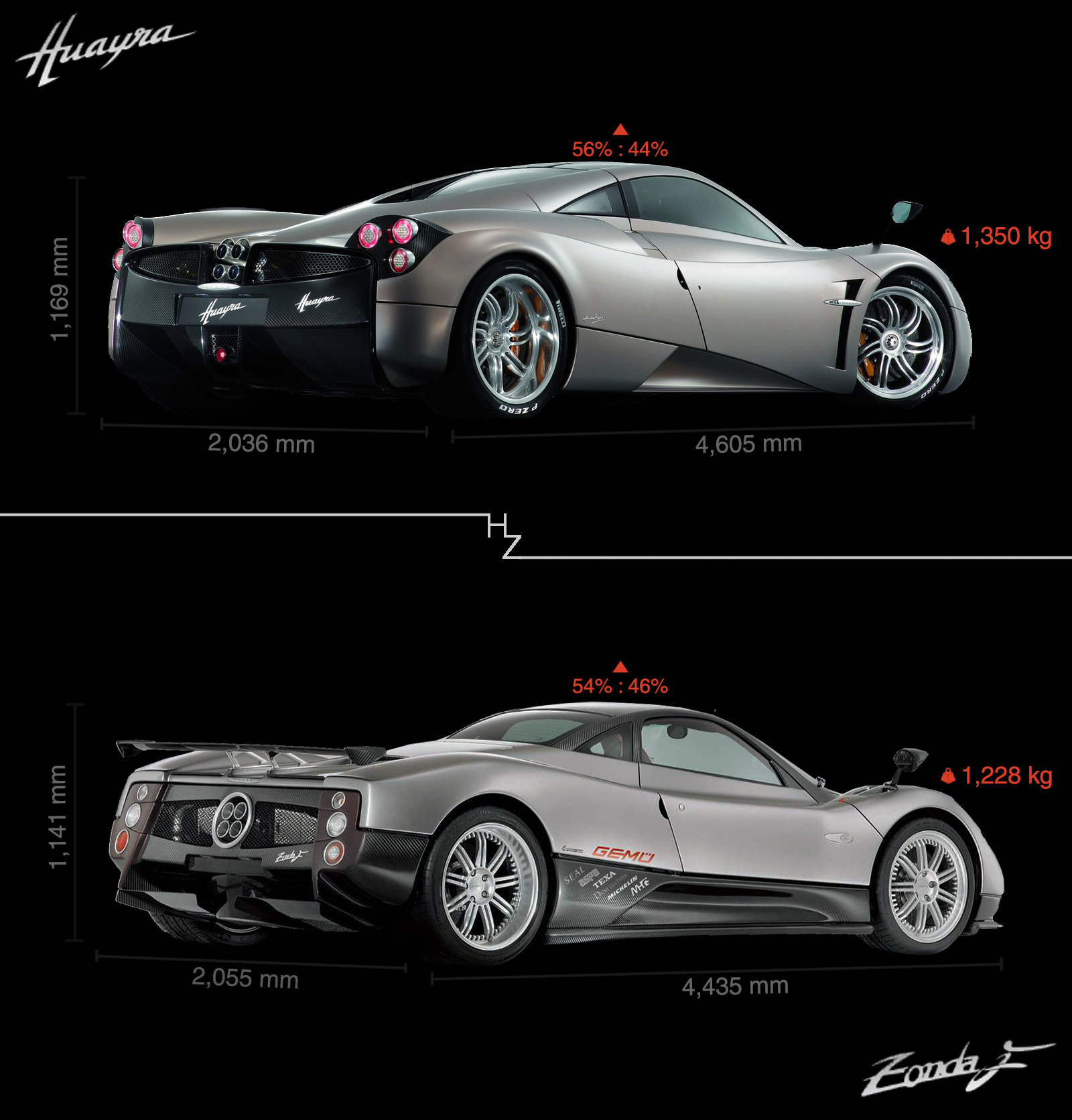
The first and most apparent differences are the overall shapes. The front section is higher, and almost looks un-aerodynamic; the absence of a front splitter makes the car look more like a GT car than a supercar. While this difference may look inferior to the Zonda, in the wind tunnel the shape is specifically designed to reduce lift. The car is also longer but at the same time it is narrower, this gives it a more elongated shape and slender look. As a result, the Huayra’s drag coefficient is .31 which is better than the Bugatti Veyron Super Sport’s .348.
The Huayra truly lives up to its name as the “god of the winds” when it comes to aerodynamics. As one of the first cars which utilizes both rear air brakes and new front air flaps, the aerodynamic profile of the car can change to match the speed ensuring proper drag (from .31 to .37) or downforce for different situations.
While increasing the length of the car, the driver’s position has been pushed further back. This gives a more spacious feel and changes the weight distribution from the Zonda’s 54% rear/46% front to 56% rear/44% front in the new Huayra.
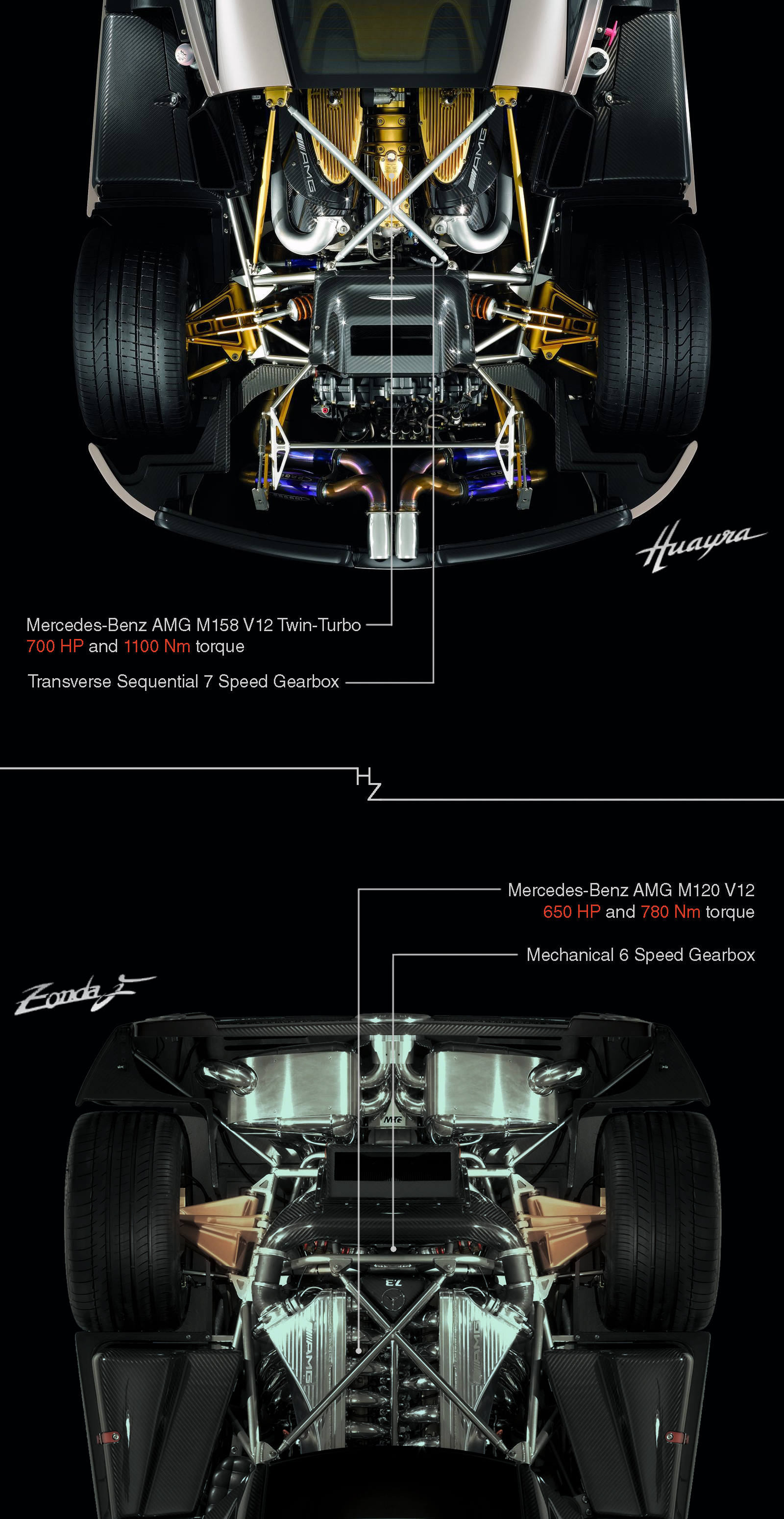
The Huayra’s weight may have increased from its predecessor the Zonda, but the added power in the new Mercedes-Benz V12 combined with two small turbos outputs greater power. While thinking about safety (particularly when the driving aids are turned off), the big V12 was designed to exhibit the least amount of turbo lag. What I personally don’t understand is why a turbo setup was used in the first place. I felt the Zonda’s naturally aspirated engine produced a solid amount of horses across the entire power band. Even though the Huayra’s turbos have been sound-tuned, the turbo spool sounds less aggressive than its screaming predecessor.
But where the engine lacks in audible purity, it makes up for in thrashing numbers. The new engine makes 700Hp and 1100Nm torque, a noticeable improvement from the Zonda F’s 650Hp and 780Nm torque. The huge increase in torque may well be a result of the turbo setup. The power is directed through a new XTRAC 7 speed sequential gearbox which weighs just 96 kg. Differences over the Zonda’s mechanical 6 speed includes better drivability and response while maintaining the light weight characteristics of the box found in the latest Zonda R.
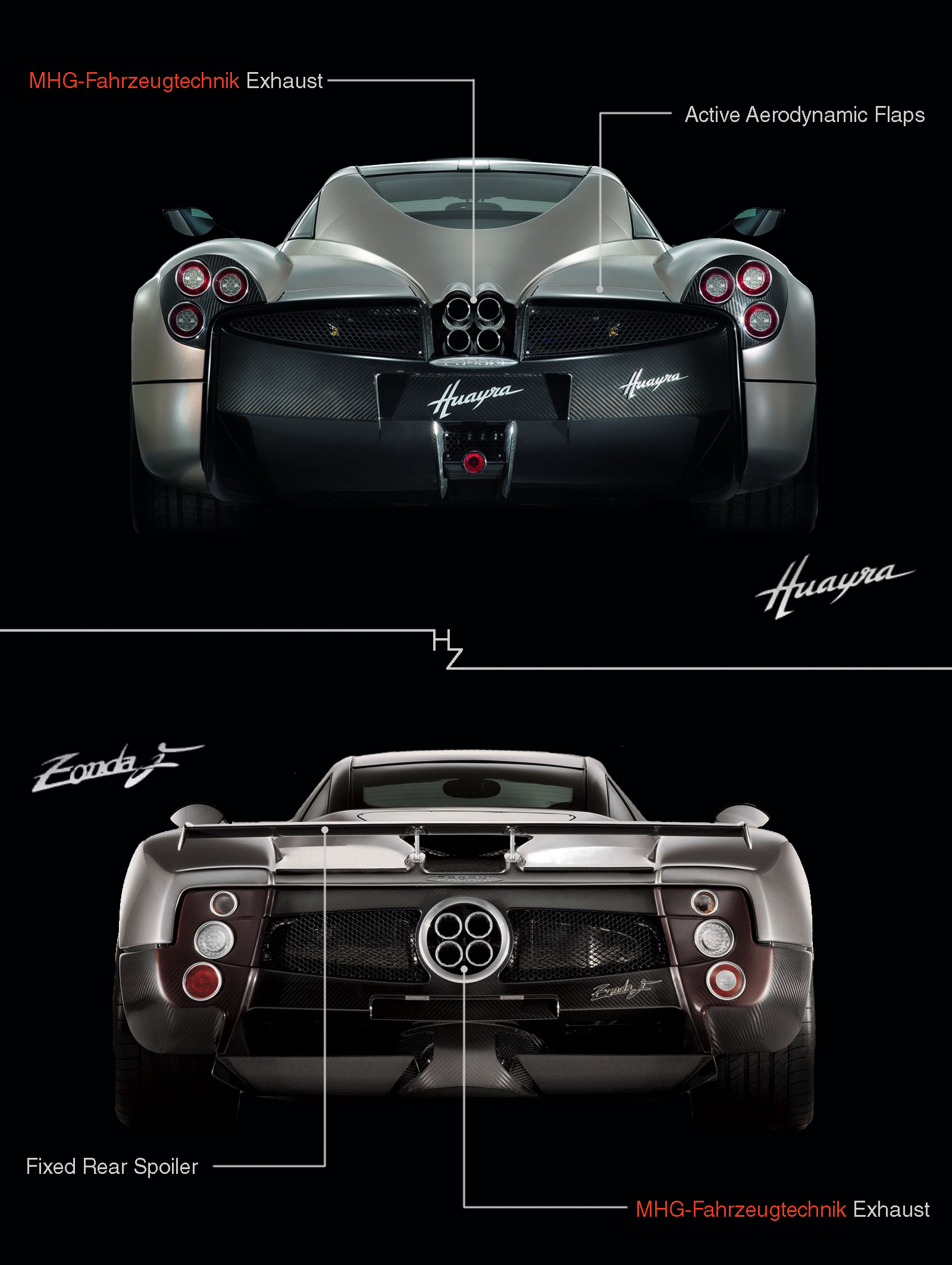
Engine gases escape through the iconic quad exhaust first seen on the Zonda. These titanium and iconel pipes manufactured by MHG offer superior air flow, great sound and above all: light weight.
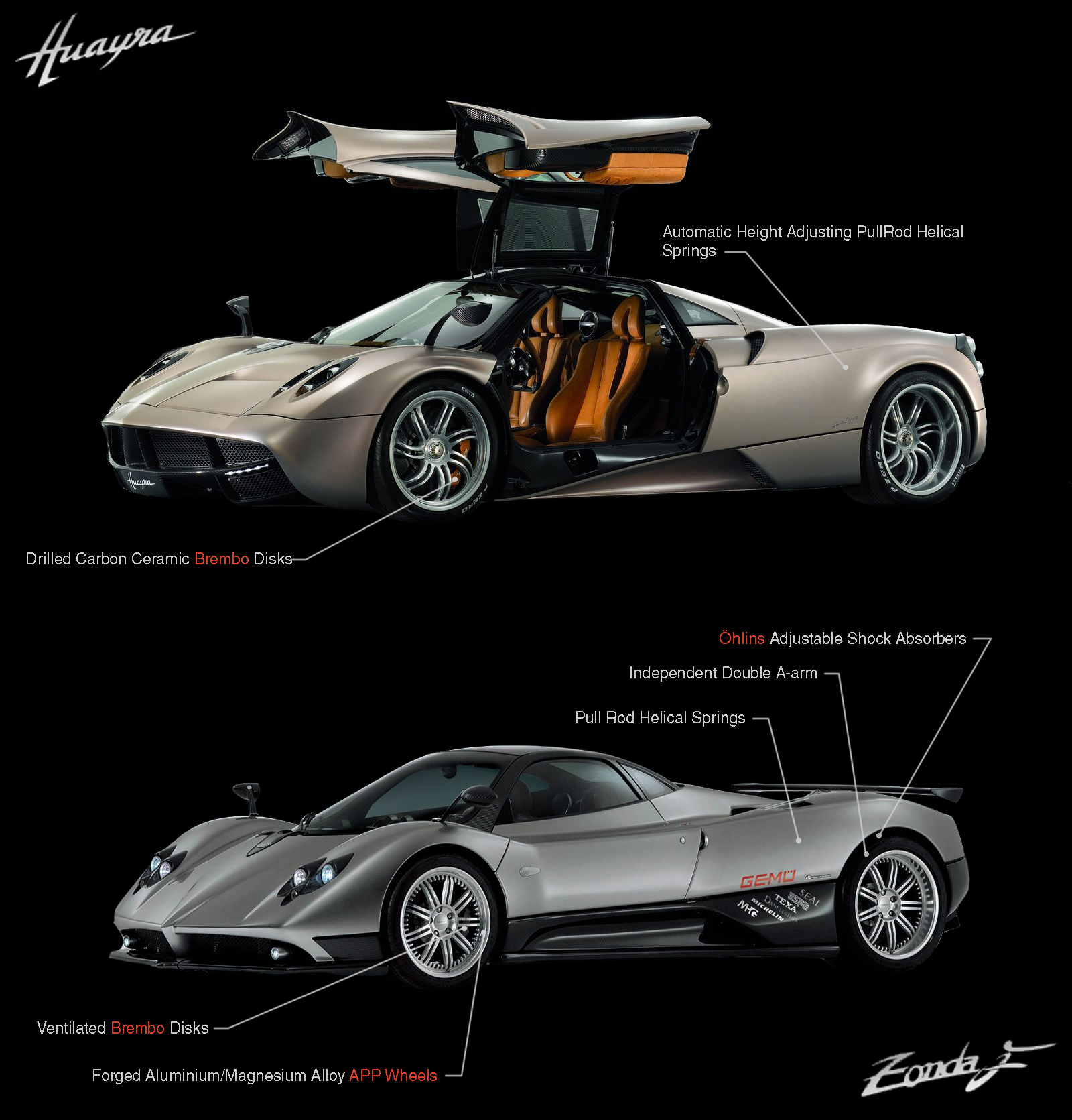
Suspension elements have largely remained the same, but some improvements from the Zonda R have been utilized such as the rear wishbones and spring setup. To coexist with the active aerodynamics, the suspension is automatically adjustable and gives the Huayra the ability to cope with different speed profiles. For example, the front lowers after 30mph so parking maneuvers become less stressful.
Wheels are sourced from APP Wheels and are forged for strength and lightness. The design is slightly different from the Zonda’s but the different sizes (19” front and 20” rear) remain the same. This time around the brakes are bespoke from Brembo and are of the carbon ceramic type.
As for the interior, I thought it would be better to let the pictures do the talking:
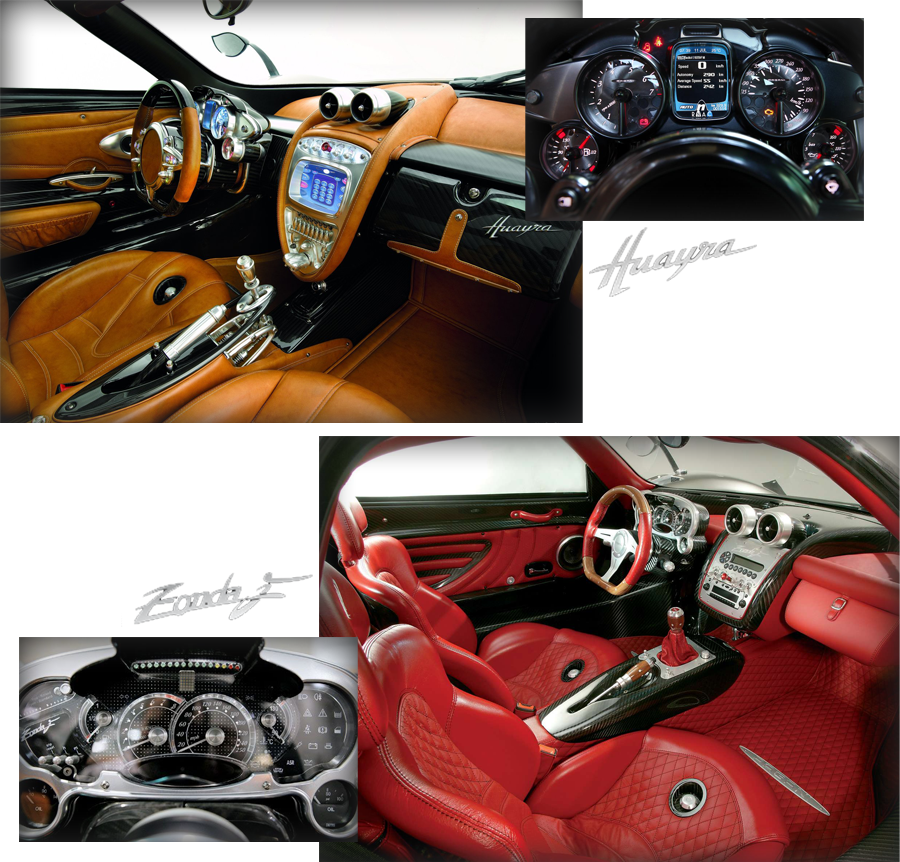
The interior may not be for everyone, but it certainly makes the car stand out from the croud.
Overall, I have to say I prefered the Zonda for its looks and sounds. While I understand the technologies and improvements in the body design (notably the active aero), platform and engine, I disaprove on the twin turbo setup. I just don't think it fits with the car's nature and purpose. Nevertheless, the new Huayra is fast, powerful and the interior definetely looks more refined and "expensive". I think I will just have to wait for a Huayra R (like the Zonda R) to truely appreciate this beast!
Pictures modified from http://www.pagani.com, http://www.edmunds.com, http://www.netcarshow.com, http://www.caranddriver.com

Comments
Great Informative post, the